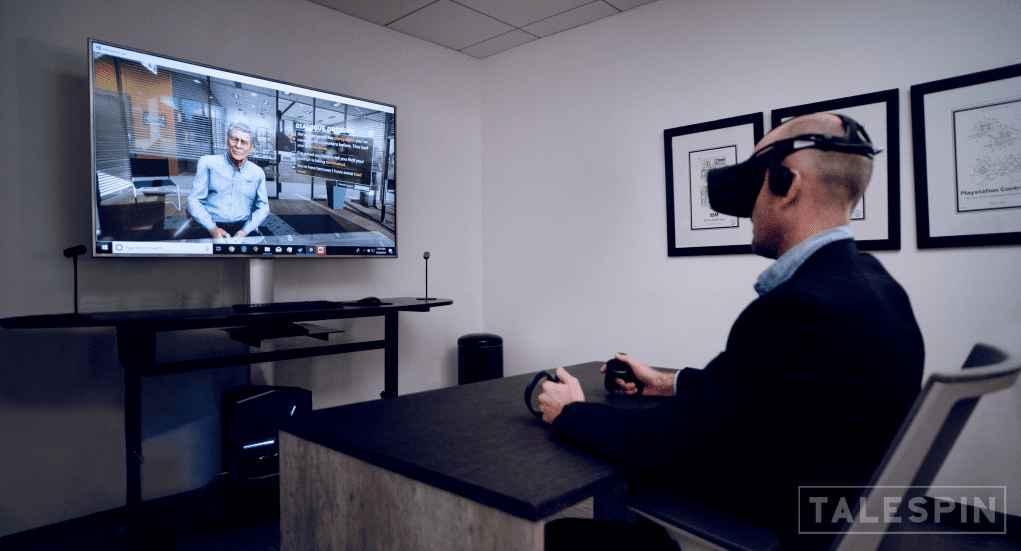With increasing demand among employers for employees with great interpersonal communication skills, VR training company Talespin is bringing ‘virtual human’ training scenarios to its platform.
‘Soft skills’—those that allow you to guide tense interactions with empathy and strong communication—are critical to the success of employees worldwide. LinkedIn reported in its 2018 Workspace Learning Report that there’s a great demand for ‘soft skills’ in talent developers, executives, and people managers. However, non-interactive forms of media don’t convey these skills effectively, and not every business has time (or budget) for its employees to reenact the often volatile scenarios which put them to the test. Talespin is building virtual human technology—AI-driven characters designed to look and act like humans—into its platform for scenario-based interpersonal communication training.
Talespin’s training platform places the user directly into a scenario guided by what the company claims is a realistic simulation of a person-to-person discussion. Each scenario is designed to be as lifelike as possible, harnessing the power of branching narrative, speech recognition and natural language processing to simulate a VR experience that can train the user on an experiential level. The idea is to present users with the messy, human side of difficult interactions in a way that will stick in their ‘emotional muscle memory’ long after they’ve exited the training simulation.

Imagine that, instead of watching a training video for how to direct interactions with customers, clients, and other employees, you get to dive into a fully realized simulation of the exact interaction you’re meant to have. Inside of the simulation, Talespin says, you can develop an immediate understanding of your impact on the person in front of you (from any number of possible conversational paths), but also how you yourself might act in each turn of the conversation.
Talespin hopes its virtual human tech will afford you a chance to not only flatten out the kinks in your own communication, but to understand the essential elements of a specific interpersonal scenario and develop the skills necessary to handle it. The hope is that these skills can be honed virtually before they are tested in the workplace.
The example provided by Talespin during its initial demo was a ‘virtual human’ named Barry, who the user (playing the role of a People Operations Manager) was expected to terminate. Talespin found that termination is one of the most universally difficult workplace conversations, so it made sense to start from there.
“When a user interacts with Barry in the simulation, they navigate hundreds of possible conversation paths to effectively (or ineffectively) terminate Barry, face common wrongful termination pitfalls, and experience Barry’s realistic speech, body language, and human-like mannerisms,” Talespin said on its official blog.

Listed on the Virtual Human page of Talespin’s website are a handful of potential use cases for ‘virtual human technology’, including but not limited to:
- Interviews
- Unconscious Bias Training
- Sensitivity Training
- De-escalation Training
- Business Negotiations
- Technical Support
- General Customer Service
- Public Speaking
- Facilitating Group Discussions
- etc.
The technology is built for scalability, the company says, to match each client’s needs. In addition to Barry, other initial ‘demo’ scenarios that Talespin has created include cold sales calls, employee performance reviews, and similarly emotional workplace conversations that would demand de-escalation.







